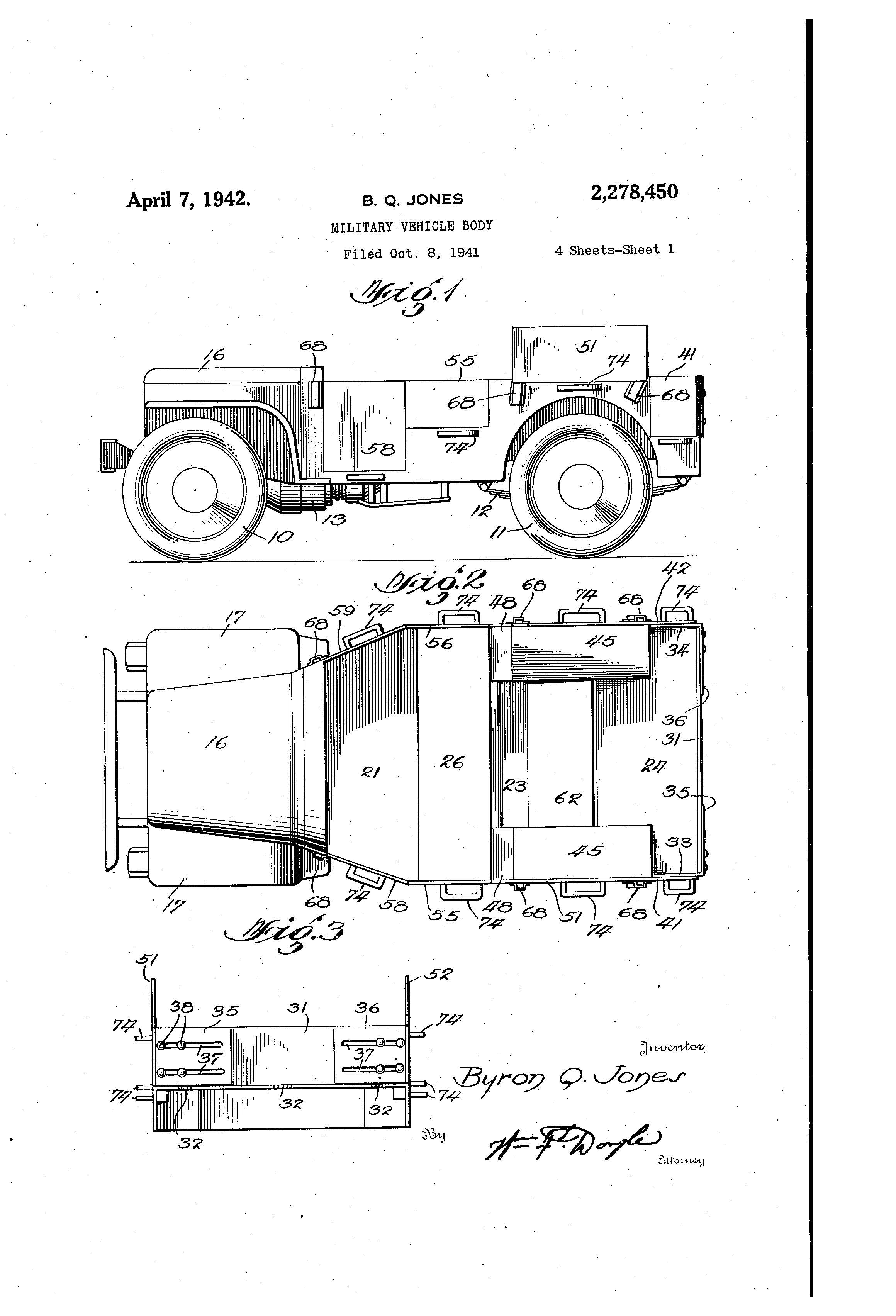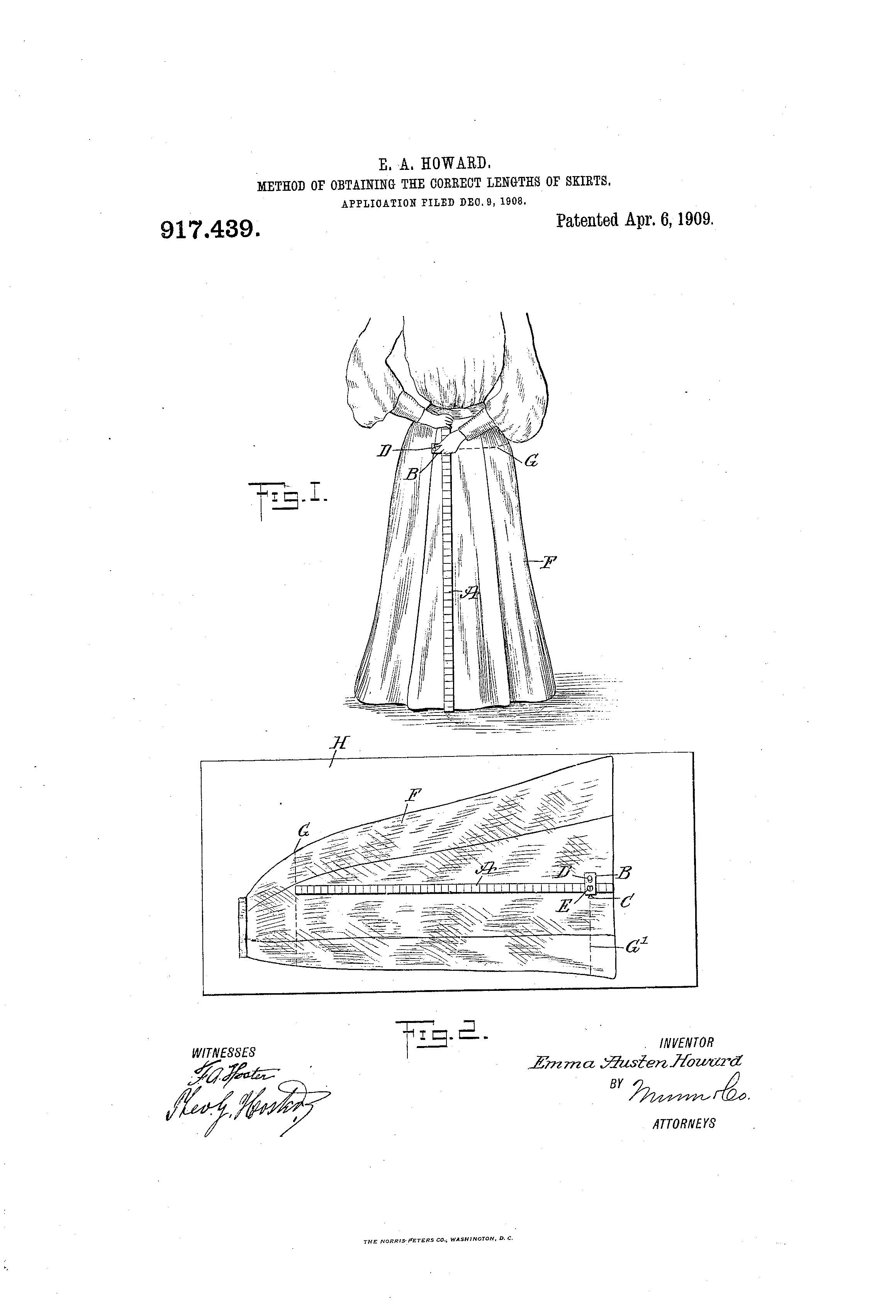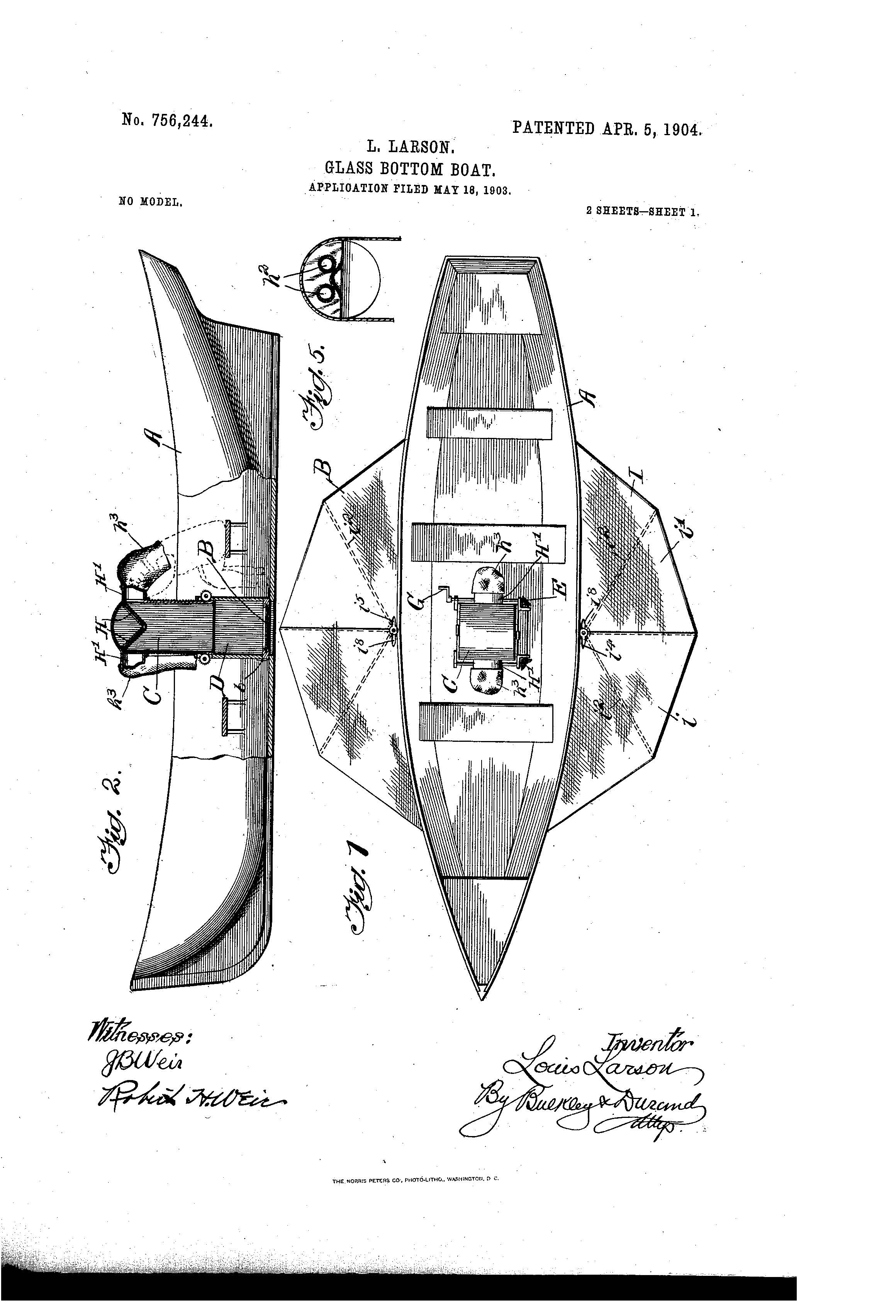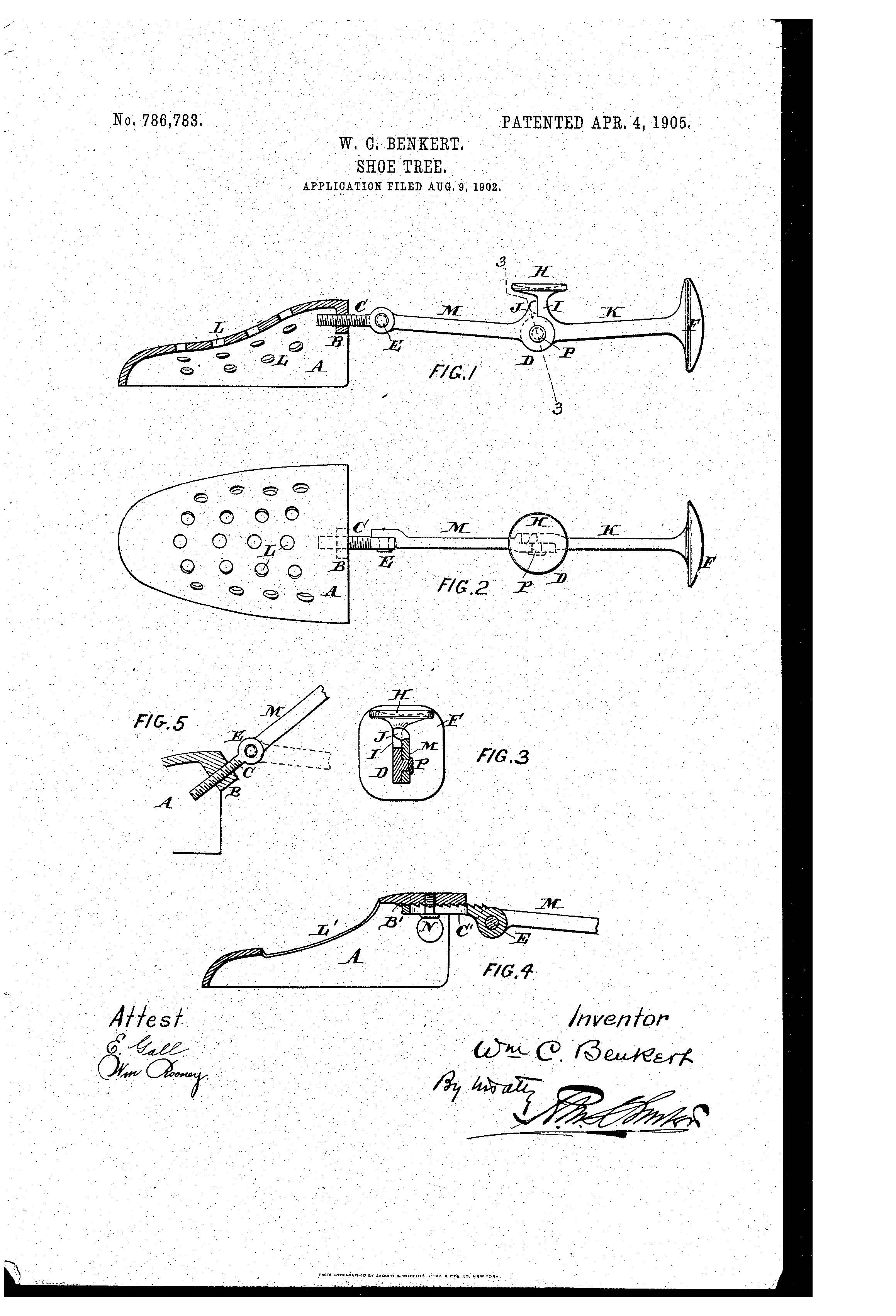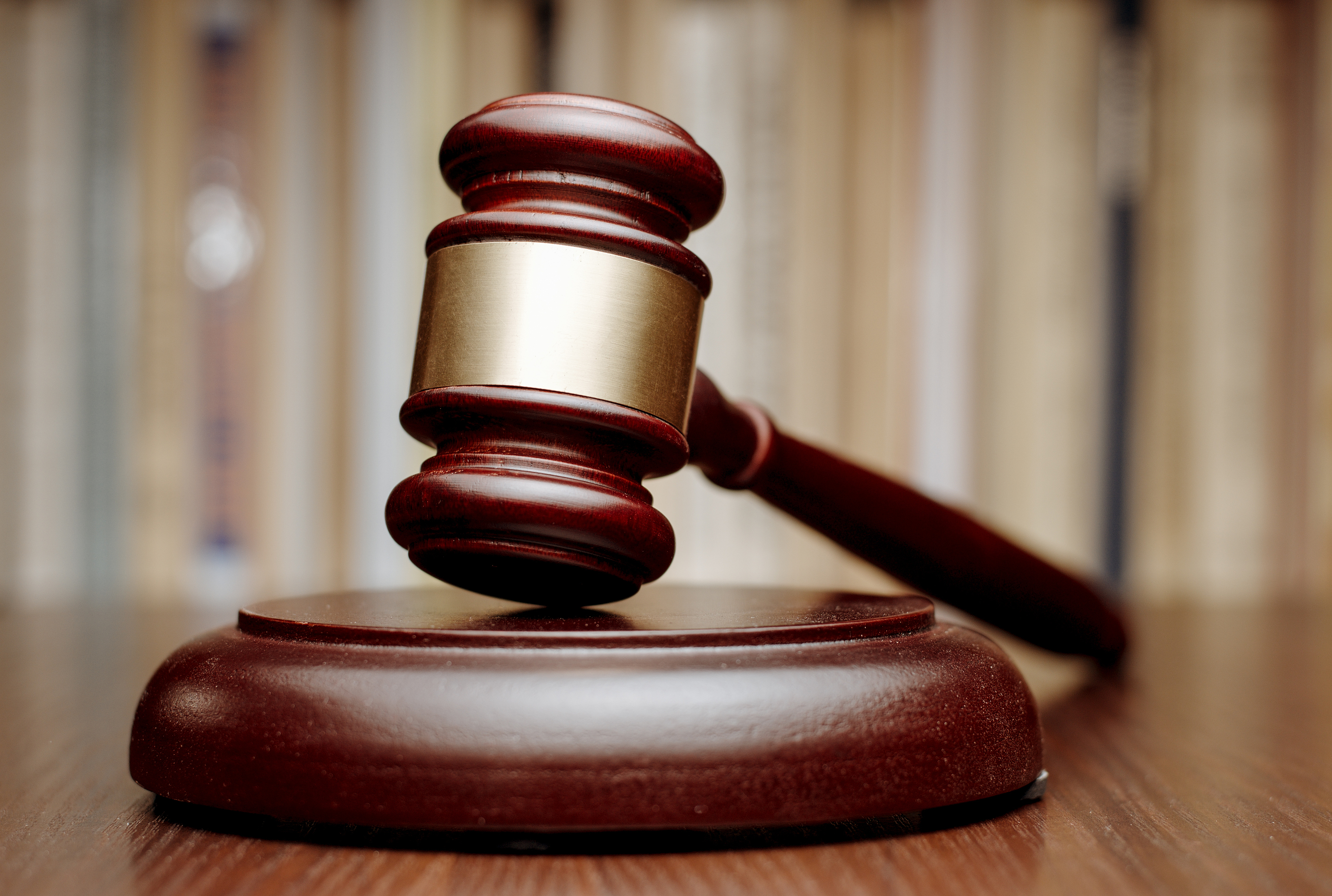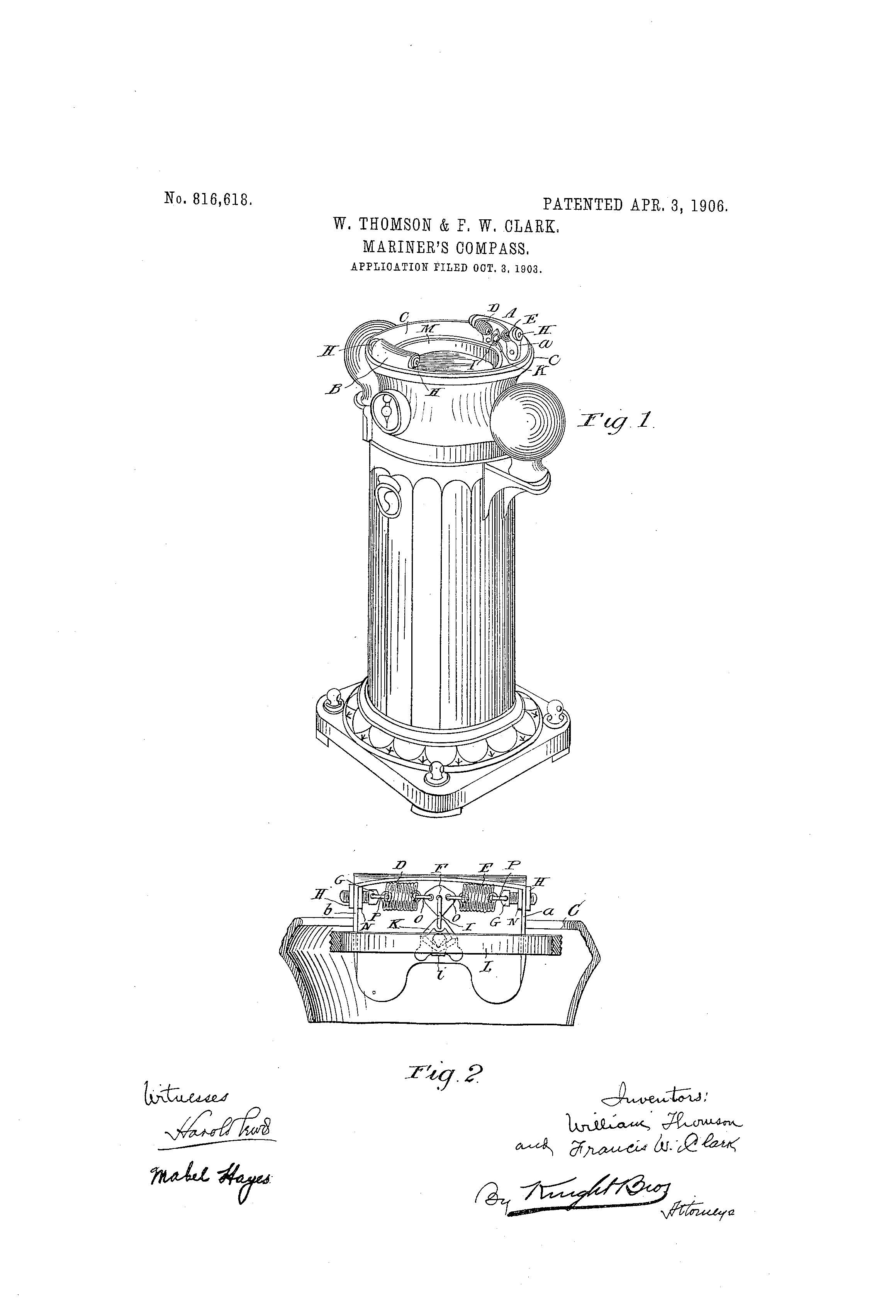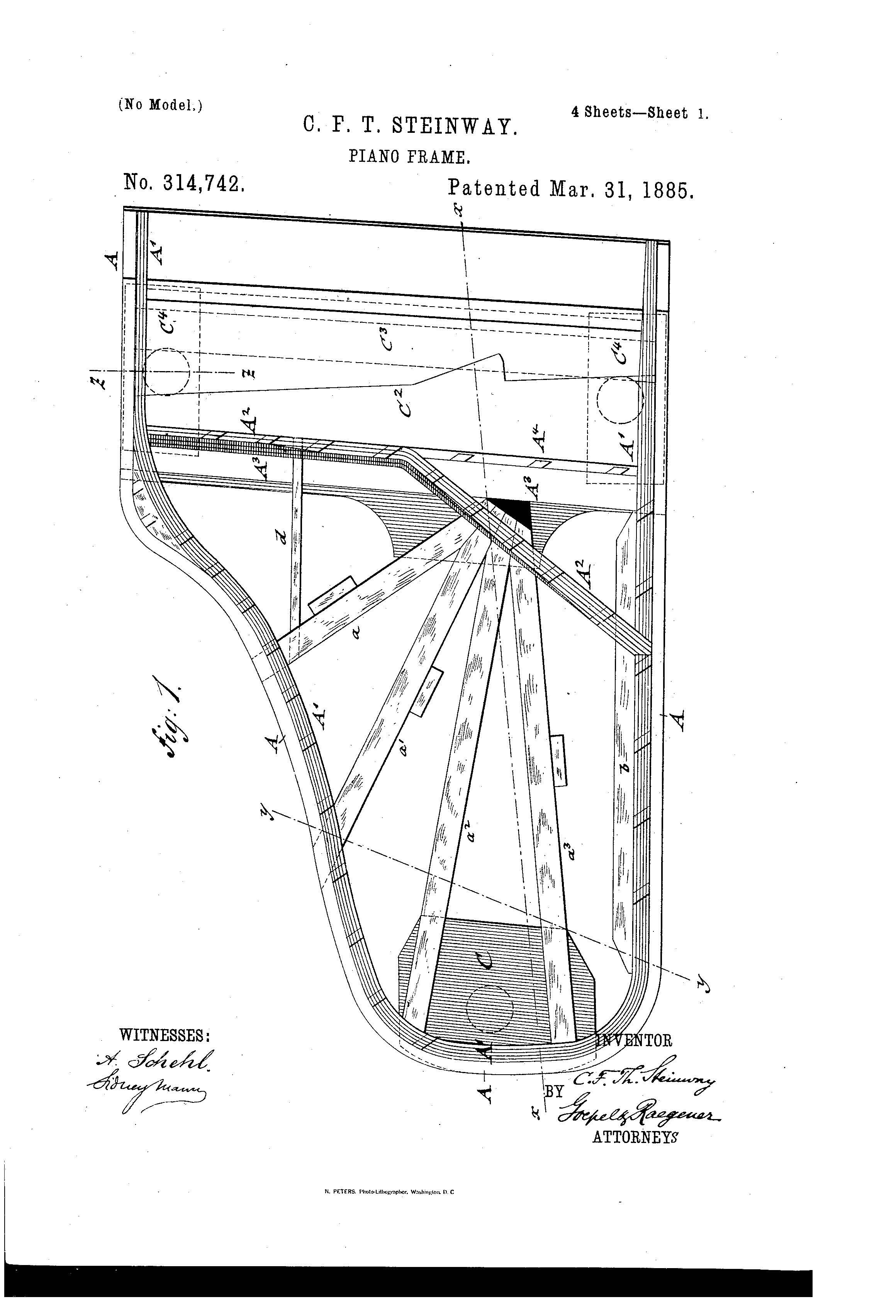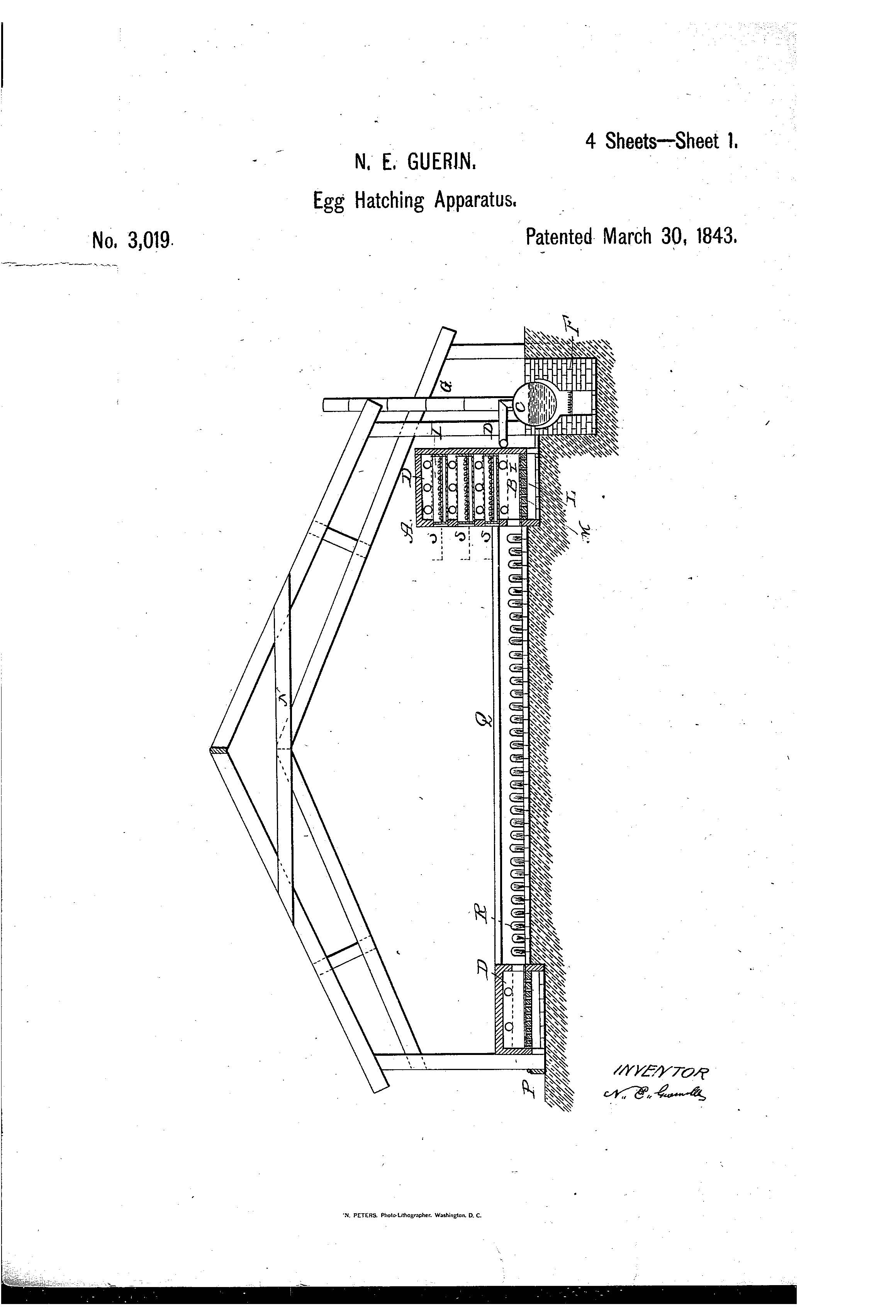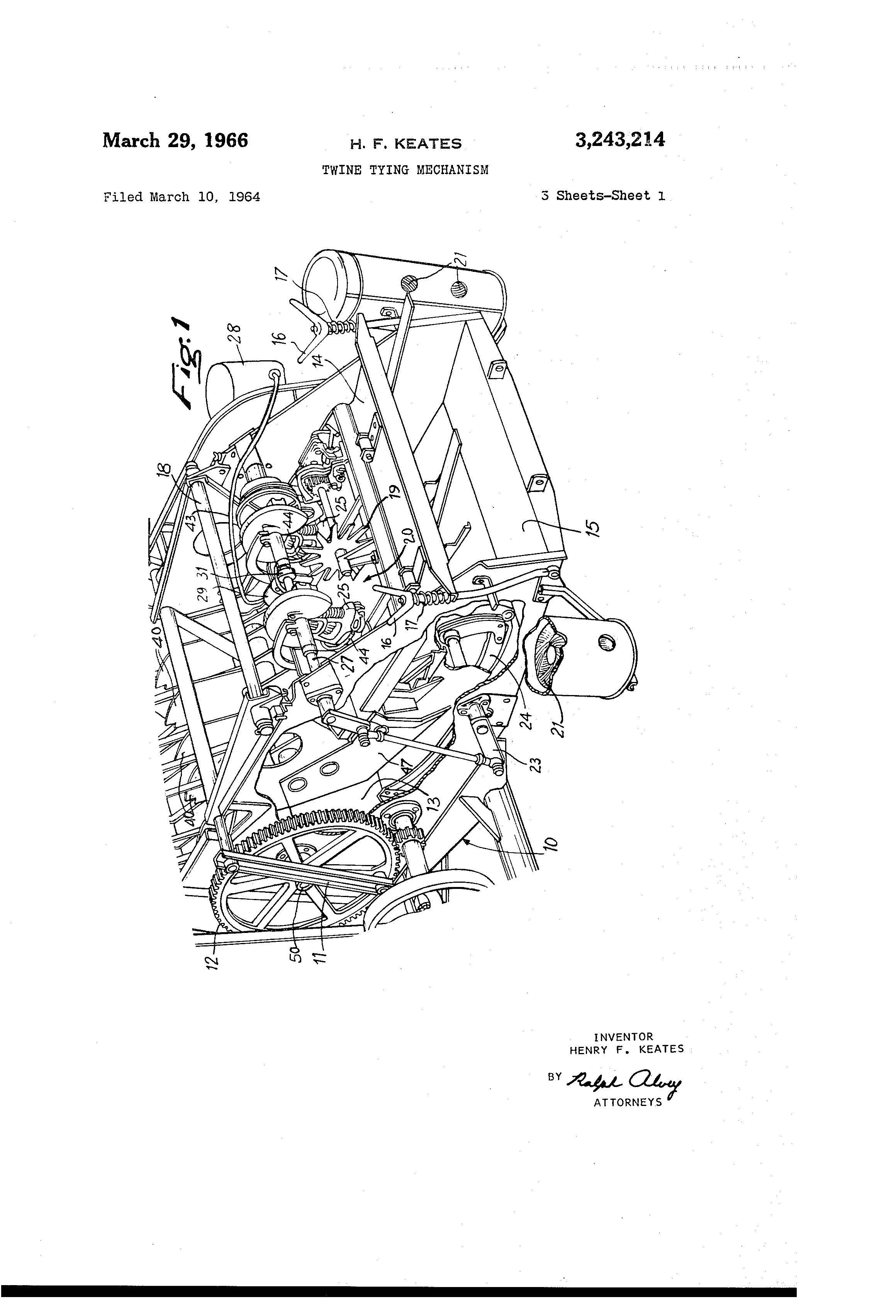Patent of the Day: Military Vehicle Body
Suiter Swantz IP takes a look back at past inventions and inventors with our Patent Of The Day.
On this day in 1942, Byron Q. Jones was granted U.S. Patent No. 2,278,450 for a MILITARY VEHICLE BODY.
The invention described herein, if patented, may be manufactured and used by or for the Government for governmental purposes without the payment of any royalty thereon.
The present invention relates to motor vehicles and more particularly to a small car vehicle body having convertible features whereby it is rendered particularly desirable for military purposes.
One of the principal objects of the invention is to provide a convertible small car body so arranged that a single vehicle may be interchangeably used as a cargo truck, personnel carrier, emergency ambulance, field beds, radio car, trench mortar unit, mobile anti-aircraft ma chine gun unit, or for other purposes.
A further object of the invention is to provide an all-purpose small car body including shiftable seats, side panels and body panels whereby the various shiftable panels may be arranged to assume different positions in order to make the body particularly adapted to the several different military uses above mentioned.
Suiter Swantz IP is a full-service intellectual property law firm serving all of Nebraska, Iowa and South Dakota. If you have any intellectual property questions or need assistance with any patent, trademark or copyright matters and would like to speak to one of our patent attorneys please feel free to contact us.




Patent of the Day: Method of Obtaining the Correct Lengths of Skirts
Suiter Swantz IP takes a look back at past inventions and inventors with our Patent Of The Day.
On this day in 1909, Emma Austen Howard was granted U.S. Patent No. 917,439 for a METHOD OF OBTAINING THE CORRECT LENGTHS OF SKIRTS.
The invention relates to dressmaking, and its object is to provide a new and improved method for marking a skirt, to enable a woman without the assistance of any person, to obtain the correct length of a skirt intended for her own use, in a very simple manner, and to also permit of marking the skirt for folds, tucks and trimmings.
The method consists in first producing a row of marks on the skirt at about the hip line and at a uniform distance from the floor while the garment is supported on the wearer, and after the skirt is removed producing a second row of marks near the bottom of the skirt a uniform distance from the first row of marks.
Suiter Swantz IP is a full-service intellectual property law firm serving all of Nebraska, Iowa and South Dakota. If you have any intellectual property questions or need assistance with any patent, trademark or copyright matters and would like to speak to one of our patent attorneys please feel free to contact us.

Kylie Minogue Wins Trademark Suit Against Kylie Jenner
A name is a powerful thing, especially in the entertainment industry. Australian singer-songwriter Kylie Minogue knows first-hand how important a name can be, particularly when someone with your name files a trademark application for the same name.
In 2014, Kylie Jenner filed a trademark application with the United States Patent and Trademark Office (USPTO) for “Kylie”. The trademark was to be used for Jenner’s advertising services, endorsement services and her growing fashion and beauty line. Unfortunately for Jenner, Minogue had previously filed multiple trademark applications for “Kylie”, “Kylie Minogue”, and “Kylie Minogue Darling”. Minogue has also owned the trademark rights to her website, Kylie.com, since 1996, a year before Jenner was born.
Minogue and KBD Pty, the company representing her, filed a notice of opposition to point out that Minogue has already obtained multiple trademarks for the name across entertainment services and musical recordings. Minogue, known for more than just her musical talents and humanitarian efforts, is also a breast cancer survivor and a vocal breast cancer activist.
While anyone could potentially trademark their name, the problem enters when the new trademark is similar to an existing trademark in such a way that would lead to a likelihood of consumer confusion. A key issue in this matter is that the services that Jenner listed in her trademark application would be similar to the services that are associated with Minogue’s trademarks. KBD stated their concern for confusion to the singer’s fans.
KBD bitingly went on to state that "Ms. Jenner is a secondary reality television personality who appeared on the television series 'Keeping Up With the Kardashians' as a supporting character, to Ms. Jenner's half-sisters, Kim, Khloe, and Kourtney Kardashian (i.e., the Kardashians). Ms. Jenner is active on social media where her photographic exhibitionism and controversial posts have drawn criticism from, e.g., the Disability Rights and African-American communities."
It is not uncommon, especially in the entertainment industry, for celebrities to trademark their name. It is reported that Beyoncé and husband Jay Z filed a trademark application in 2016 for “Blue Ivy Carter”, the name of their daughter (Serial No. 86883293). The trademark became available for opposition on January 10, 2017. The trademark would cover goods and services for baby items, fragrances, video games etc. In 2012, the couple filed a trademark application for “Blue Ivy” but it was denied by the USPTO as the trademark was already being used by a wedding and event planner in Boston.
On January 19, 2017, Minogue withdrew her opposition allowing Jenner’s application to proceed but on Monday, February 6, 2017, the USPTO rejected Jenner’s request to trademark “Kylie”. Jenner plans to appeal the USPTO’s rejection. It is not known when she will appeal the rejection but it will be interesting to see what the USPTO decides after the appeal is filed.
Suiter Swantz IP is a full-service intellectual property law firm serving all of Nebraska, Iowa and South Dakota. If you have any intellectual property questions or need assistance with any patent, trademark or copyright matters and would like to speak to one of our patent attorneys please feel free to contact us.
Patent of the Day: Glass Bottom Boat
Suiter Swantz IP takes a look back at past inventions and inventors with our Patent Of The Day.
On this day in 1904, Louis Larson was granted U.S. Patent No. 756,244 for a GLASS BOTTOM BOAT.
In a glass-bottom boat characterized by this invention the glass or transparent plate in the bottom of the boat is preferably covered by an inclosure and one or more mirrors are arranged at the top of the inclosure in such manner that the bottom of a lake or river or other body of water may be seen and carefully examined by observing the reflection in any one of said mirrors. Thus instead of looking downward and directly through the glass bottom of the boat the observer is allowed to sit upright in the boat and look straight ahead into one of the reflecting- mirrors. Means are provided for raising and lowering the top of the inclosure, so as to position the mirrors at the right height, and further means are provided for preventing the breath of the observer from darkening the surface of the mirror into which he is looking. The boat is also provided with a pair of laterally-extending wings, which shade the water in the vicinity of the boat and which makes it possible to see to a greater depth in the water than without them. Preferably these wings are of such character as to be readily folded back against the side of the boat when not in use. An electric lamp is also provided which can be lowered into the water, so as to illuminate the immediate vicinity of the glass bottom.
Suiter Swantz IP is a full-service intellectual property law firm serving all of Nebraska, Iowa and South Dakota. If you have any intellectual property questions or need assistance with any patent, trademark or copyright matters and would like to speak to one of our patent attorneys please feel free to contact us.


Patent of the Day: Shoe Tree
Suiter Swantz IP takes a look back at past inventions and inventors with our Patent Of The Day.
On this day in 1905, William C. Benkert was granted U.S. Patent No. 786,783 for a SHOE TREE.
The object of this invention is to provide an inexpensive construction of shoe expander or tree adapted to hold the shoe in a stretched condition when not in use or for purposes of flattening the sole and removing creases from the upper, the said tree having capacity of adjustment and ventilation.
In carrying out this invention a toe and instep portion or toe-piece are combined with a jointed heel-piece, the joint being of such nature that it acts to stretch and flatten the shoe.
In a preferred construction the toe and instep portion or toe-piece is connected with a toggle by an adjustable connection, desirably a screw-threaded stud screwing into a lug in the toe-piece and to which stud the toggle is jointed.
This invention also comprehends a construction of toe and instep portion or toe-piece which is provided with a perforation or perforations for the purpose of allowing free ventilation.
Suiter Swantz IP is a full-service intellectual property law firm serving all of Nebraska, Iowa and South Dakota. If you have any intellectual property questions or need assistance with any patent, trademark or copyright matters and would like to speak to one of our patent attorneys please feel free to contact us.

Can Laches be Used as a Defense in Patent Infringement Cases?
On March 21, 2017, the Supreme Court of the United States handed down a 7-1 decision, delivered by Justice Alito, in SCA Hygiene Products AB v. First Quality Baby Products LLC. The Supreme Court held that in patent infringement cases laches cannot be used as a defense where the alleged infringement occurred within the period prescribed by §286 of the Patent Statute. This decision comes after the recent Supreme Court opinion in Petrella v. Metro-Goldwyn-Mayer, whereby the Supreme Court also limited the use of a laches defense in copyright infringement cases. In Petrella, the Supreme Court held “that laches cannot preclude a claim for damages incurred within the Copyright Act’s 3-year limitations period.”
At common law, the laches doctrine provides a defense to a claim in situations where a plaintiff takes unreasonable delay in filing a claim against the defendant and the delay was prejudicial to the defendant. The Black’s law legal dictionary states such as delay as “delay that works to the disadvantage of another,” and “inexcusable delay coupled with prejudice to the party raising the defense.” In Petrella the Supreme Court characterized the laches defense as “a defense developed by courts of equity” to protect defendants against “unreasonable prejudicial delay in commencing suit.”
Laches can typically be seen in intellectual property cases when a statute does not sufficiently protect a defendant from a plaintiff’s delay. Traditionally, laches defenses have been granted in patent infringement cases when patent owners let a patent ride for six or more years while the technology further develops.
In 2003, SCA Hygiene informed First Quality that they infringed on U.S. Patent No. 6,375,646 (ABSORBENT PANTS-TYPE DIAPER). First Quality responded to SCA and stated the patent in question was invalid. In response, SCA pursued a re-examination proceeding on the patent in 2004 and in 2007; the re-examination confirmed the patent was in fact valid. In 2010, seven years after the original notification was served, SCA filed a lawsuit against First Quality for patent infringement. First Quality moved for summary judgment based on laches and equitable estoppel. Due to the delay in filing the lawsuit, the District Court granted summary judgment in favor of First Quality on both grounds. SCA appealed to the Federal Circuit panel in which they affirmed the District Court’s laches holding. The Federal Circuit reheard the case en banc, due to the ruling of Petrella, which was decided in the midst of this case. The en banc court reaffirmed the original Federal Court’s laches holding and in light of this the Supreme Court granted certiorari.
Based on Petrella’s reasoning, the Supreme Court noted that this case “easily fits the provision at issue here.” Similar to the Copyright Act cited in Petrella, the Supreme Court discussed Section 286 of the Patent Act, which represents Congress’s judgment that “a patentee may recover damages for any infringement committed within six years of the filing of the claim.” First Quality contended that this case differs from Petrella because a true statute of limitations runs forward from the date a cause of action accrues, whereas §286’s limitations period runs backward from the filing of the complaint. The Court stated that First Quality’s argument misunderstands the way in which statutes of limitations work and noted, in Petrella, “[a] claim ordinarily accrues ‘when [a] plaintiff has a complete and present cause of action.’” Some claims may be subject to the “discovery rule”; the limitations period begins when the plaintiff discovers or should have discovered the wrong giving rise to the claim, but that is not a universal feature of statute of limitations. “For these reasons Petrella cannot be dismissed as applicable.”
First Quality further argued that laches falls within §282(b)(1) because laches is a defense based on “unenforceability.” SCA disputed First Quality’s interpretation arguing that “[r]ecognition of laches as a defense . . . does not affect the general enforceability of the patent against others.” The Court agreed they need not decide this question as “it would be exceedingly unusual, if not unprecedented, if Congress chose to include in the Patent Act both a statute of limitations for damages and a laches provision applicable to a damages claim.” The Court further stated “laches cannot be invoked to bar a claim for damages incurred within a limitations period specified by Congress.”
Justice Breyer, in his dissenting opinion, stated “[i]n my view, however, the majority has ignored the fact that despite the 1952 Act’s statute of limitations, there remains ‘a gap’ to fill. Laches fills this gap. And for more than a century courts with virtual unanimity have applied laches in patent damages cases”
The 7-1 Supreme Court decision vacated the Federal Circuit’s judgment in part and remanded the case for further proceedings.
Click here to read the full opinion
Suiter Swantz IP is a full-service intellectual property law firm serving all of Nebraska, Iowa and South Dakota. If you have any intellectual property questions or need assistance with any patent, trademark or copyright matters and would like to speak to one of our patent attorneys please feel free to contact us.
Patent of the Day: Mariner's Compass
Suiter Swantz IP takes a look back at past inventions and inventors with our Patent Of The Day.
On this day in 1906, William Thomson and Francis Wood Clark were granted U.S. Patent No. 816,618 for a MARINER'S COMPASS.
This invention relates to an improved suspension for ships’ compass-bowls. This suspension is so constructed that the vibration caused by the ship’s engines, the roll or pitch of the vessel is taken up and softened before reaching the compass-card. The suspension is also so arranged that it gently resists but at the same time allows the compass-bowl to swing in every direction. We attain this all round equal cushion-like resistance by the lateral or torsion motion of tightening links and springs.
Suiter Swantz IP is a full-service intellectual property law firm serving all of Nebraska, Iowa and South Dakota. If you have any intellectual property questions or need assistance with any patent, trademark or copyright matters and would like to speak to one of our patent attorneys please feel free to contact us.

Patent of the Day: Piano Frame
Suiter Swantz IP takes a look back at past inventions and inventors with our Patent Of The Day.
On this day in 1885, C.F. Theodore Steinway was granted U.S. Patent No. 314,742 for a PIANO FRAME.
This invention has reference to certain improvements in grand pianos, some of which are also adapted to upright Pianos.
The improvements relate more especially to a case made of a bent inner and outer rim and of stiffening braces, said rims being supported by a rear console interposed between the bottom edge of the rims and the hind leg, and by front consoles interposed between the rims and the key-frame bed. The key-frame bed is reenforced by a transverse brace-block with T-shaped ends, to which the front legs and the lyre of the piano are secured. The opposite sides of the bent, rims are connected by a transverse obtuse-angled closing-rim that forms, with the inner rim, a continuous support for the sounding-board.
The invention consists, further, of an improved construction of the metallic string frame, the treble and middle webs of which are on a level with the treble and middle strings, while the bass-web is arched or cupola-shaped, so as to be on a level with the overstrung bass strings, whereby a larger space is obtained between the frame and the sounding-board for the better development of the sound-waves of the bass-strings, said arched bass-web having a depressed portion for hitching on the longest of the series of middle strings.
The Steinway family is one of the most well renowned names in the piano industry. Englehard Steinway built his first piano in the kitchen of his home in 1836. In 1850 the Steinway family immigrated to the United States from Germany and on March 5, 1853 Steinway & Sons was founded. The family later shortened the company name to just “Steinway”. After only three years of the company’s founding the Steinways were making over 208 pianos per year. On December 20, 1859, Henry Steinway, Jr. received the company’s first patent for PIANO, U.S. Patent No. 26,532.
That first piano Englehard made started the snowball effect for the success of the Steinway family. The company has made over 600,000 pianos, received multiple awards and patents, and is a preferred brand by many musical artists. One of the classic pianos can even be found in the East Room in the White House.
Suiter Swantz IP is a full-service intellectual property law firm serving all of Nebraska, Iowa and South Dakota. If you have any intellectual property questions or need assistance with any patent, trademark or copyright matters and would like to speak to one of our patent attorneys please feel free to contact us.




Supreme Court Copyright Decision: Star Athletica v. Varsity Brands
On Wednesday, March 22nd, the Supreme Court of the United States gave its opinion in the copyright case, Star Athletica, L.L.C. v. Varsity Brands, Inc. In a 6-2 decision, the Supreme Court found that the design feature of a cheerleading uniform is separate from the uniform itself and is protectable under the Copyright Act.
This affirms the U.S. Court of Appeals for the Sixth Circuit’s reversal of a lower court’s decision. In an earlier decision, a U.S. District Court ruled on an infringement action filed by Varsity Brands Inc. (“Varsity”) against Star Athletica, L.L.C. (“Star”). Varsity designs and manufactures athletic clothing and cheerleading uniforms. They received a copyright registration for the two-dimensional artwork of the designs at issue in this case. In the suit, Varsity alleged Star was marketing and selling cheerleading uniforms that were substantially similar to designs for which Varsity claimed copyright. Star asserted that Varsity’s copyrights were invalid. The District Court ruled that the designs were not eligible for copyright protection because they could not be conceptually or physically separated from the uniforms. In a previous article, we discussed the Sixth Circuit’s reversal of the District Court ruling, whereby the Sixth Circuit concluded that the graphics of the Varsity uniforms could be “identified separately” and were “capable of existing independently” from the uniforms themselves.
In January of 2016, Star Athletica, L.L.C. petitioned the Supreme Court for a writ of certiorari to appeal the case. The Supreme Court granted Star’s petition to determine the appropriate test for copyright eligibility in cases involving design elements or features of a useful article. The case was argued in the Supreme Court on October 31, 2016 and decided on March 22, 2017. Justice Clarence Thomas authored the majority opinion. Justice Thomas cited Mazer v. Stein, a case where the Supreme Court held the respondents owned a copyright in a statuette created for use as a lamp base despite the lamp being a utilitarian item. The Supreme Court found that Varsity’s subject matter satisfied a two-step eligibility test.
We hold that an artistic feature of the design of a useful article is eligible for copyright protection if the feature (1) can be perceived as a two- or three-dimensional work of art separate from the useful article and (2) would qualify as a protectable pictorial, graphic, or sculptural work either on its own or in some other medium if imagined separately from the useful article. Because the designs on the surface of respondents’ cheerleading uniforms in this case satisfy these requirements, the judgment of the Court of Appeals is affirmed. It is so ordered.
The opinion did clarify that “our test does not render the shape, cut, and physical dimensions of the cheerleading uniforms eligible for copyright protection.”
Justice Stephen Breyer issued a dissenting opinion in which Justice Anthony Kennedy joined. Justice Breyer wrote that he agreed with much of the Court’s decision, but disagreed regarding copyright eligibility of the Varsity designs. He stated “the designs cannot “be perceived as . . . two- or three-dimensional work[s] of art separate from the useful article.” He reasoned the designs Varsity submitted to the Copyright Office are only pictures of cheerleader uniforms which are useful items.
A picture of the relevant design features, whether separately “perceived” on paper or in the imagination, is a picture of, and thereby “replicate[s],” the underlying useful article of which they are a part. Ante, at 1, 10. Hence the design features that Varsity seeks to protect are not “capable of existing independently o[f] the utilitarian aspects of the article.” 17 U.S.C. §101.
Many experts believe this ruling will have major implications for the fashion, apparel and product design industries. Some feel it provides needed clarity and sets forth a proper test for copyright eligibility of design features. Others feel it adds uncertainty by calling conventional wisdom into question and may have negative implications in the furniture and appliance industries. Some expect to see an uptick in the number of copyright registration applications filed by clothing and product designers.
Click here to read the full opinion.
Suiter Swantz IP is a full-service intellectual property law firm serving all of Nebraska, Iowa and South Dakota. If you have any intellectual property questions or need assistance with any patent, trademark or copyright matters and would like to speak to one of our patent attorneys please feel free to contact us.
Patent of the Day: Egg Hatching Apparatus
Suiter Swantz IP takes a look back at past inventions and inventors with our Patent Of The Day.
On this day in 1843, Napoleon E. Guerin was granted U.S. Patent No. 3,019 for a EGG HATCHING APPARATUS.
The nature of this invention consists in a method of rearing the chickens, after the hatching of the eggs, in an oven as herein described.
Several attempts have been made to hatch eggs by artificial means, and to rear the chickens thus produced. The first of these operations has been successful, but all efforts to rear the chickens have been hitherto fruitless; from the circumstances that those who made the experiments considered the chicken as an animal which was endowed with the faculties of locomotion and of sight, and was also enabled to partake of food from the moment of its birth and under this impression all that was necessary, or deemed so, was to protect the young birds from the inclemency of the weather, and they were accordingly kept in heated apartments without air. Although the chicken is a bird which is easily reared, since it is able to eat, as it were, at the moment it breaks its shell, still it must be admitted that there are also certain requisites which are indispensable to its existence, namely, air and heat judiciously combined. If the attempts above alluded to had been effected by men of observation, residing in the country, they would have doubtless been more successful in their undertakings, as it is extremely probable that they would have observed the method adhered to by the farmer’s wife, when by some mishap a newly hatched brood of chickens are deprived of the mother who would so faithfully have watched over them; a method it may be remarked which almost invariably succeeds, they are taken by the farmer’s wife and placed in a loosely woven basket, in the bottom of which some fresh straw has previously been deposited, the whole being covered with cotton or wool, after which the basket is brought near the fire, where it is left for a fortnight and there receive the heat from it. If you ask these women the motive of this mode of treating the young chicken, they will merely answer that they do not know why this system is pursued in preference to any other, but that they have seen their mothers follow the same method and meet with similar success. A careful observer will at once perceive in this the way in which the hen's place may be adequately supplied; we always see the feet of the chickens on the ground which keeps them in a cool state, even when guarded by its parent, while the head and the upper part of the body are warmed by the heat derived from the hen's body. Whether we describe the means employed by the farmer's wife, to chance as to a series of observations, it would be impossible to imitate nature more effectually, since the chicken obtains thus air from below and warmth from above.
Suiter Swantz IP is a full-service intellectual property law firm serving all of Nebraska, Iowa and South Dakota. If you have any intellectual property questions or need assistance with any patent, trademark or copyright matters and would like to speak to one of our patent attorneys please feel free to contact us.


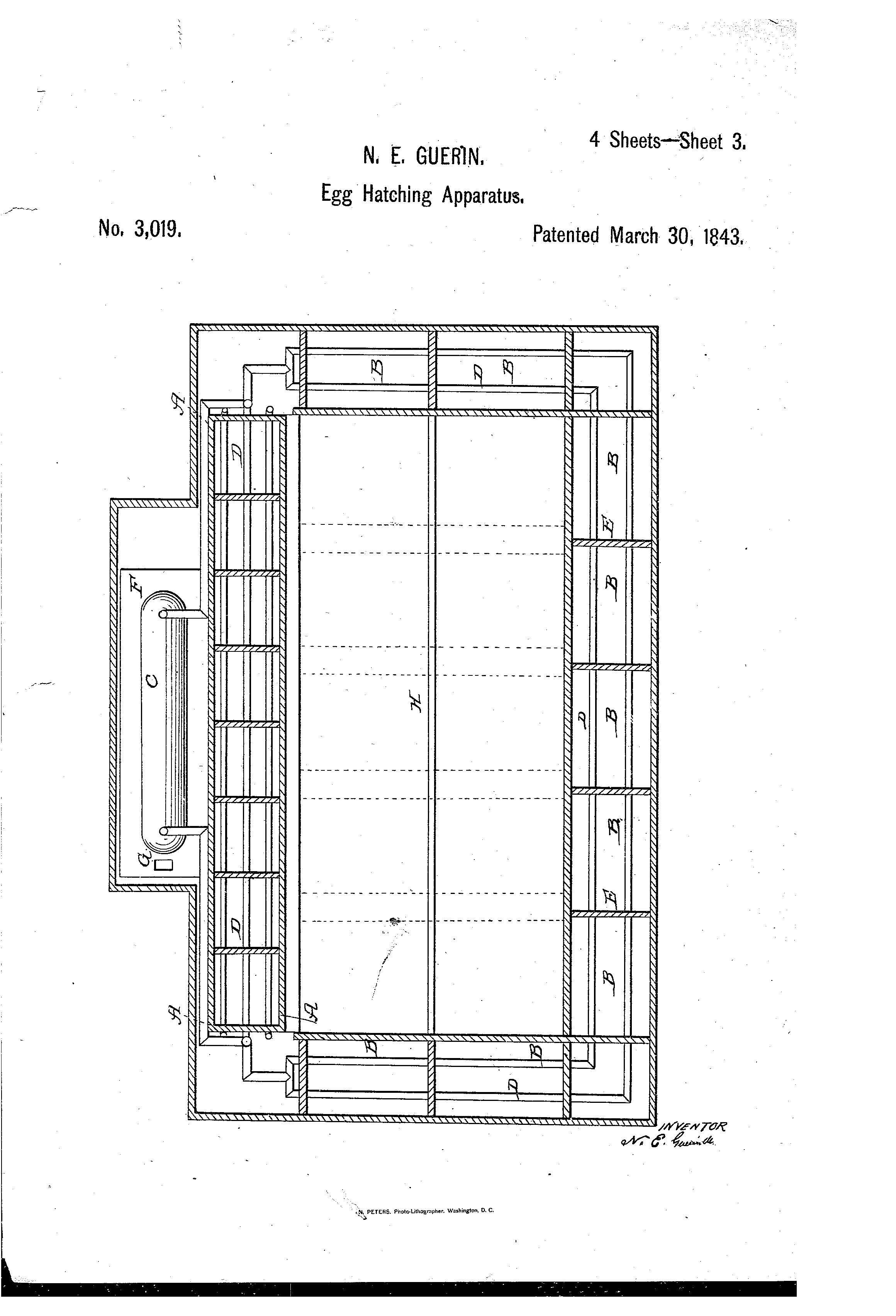
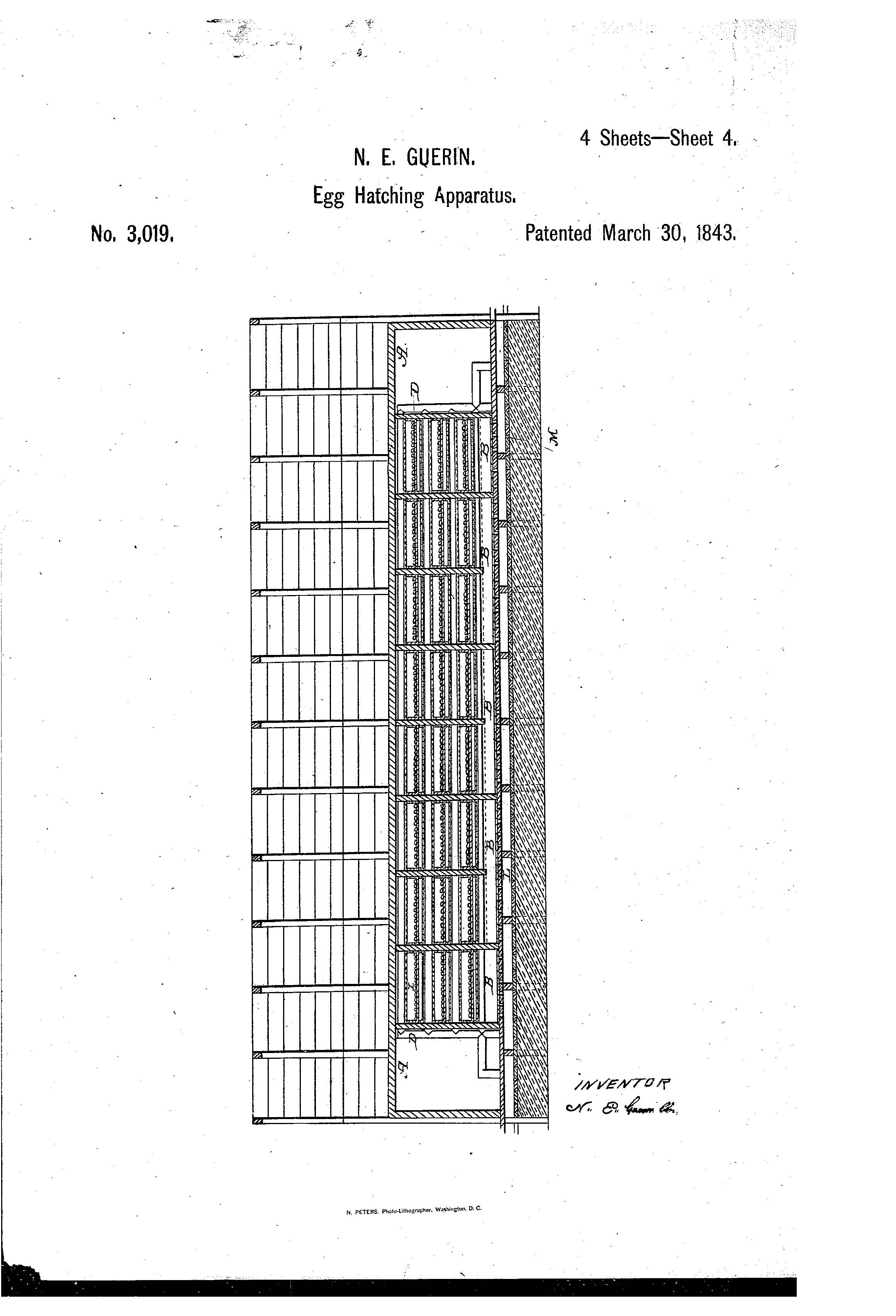
Patent of the Day: Twine Tying Mechanism
Suiter Swantz IP takes a look back at past inventions and inventors with our Patent Of The Day.
On this day in 1966, Henry F. Keates was granted U.S. Patent No. 3,243,214 for a TWINE TYING MECHANISM.
This invention comprises a new and improved twine tying mechanism for a baler, more particularly, a twine knotter that produces stronger knots by wetting the twine as each knot is tied.
While prior art twine-tying mechanism produce defective knots less than one percent of the time, the few “misses” that still occur are a nuisance because they allow bales to break up and scatter about the field. Needless to say, scattered bales reduce the efficiency of the baling operation, since they must be cleaned up by hand.
Defective knots sometimes result from slippage of the twine, which occurs when the baled material expands and pulls the knot apart. It is an object of this invention, therefore, to provide a twine-tying mechanism for tying a knot that is less apt to be pulled apart when subjected to large tension forces. This object is achieved by means of a pump that wets each knot during the final stages of its formation.
Suiter Swantz IP is a full-service intellectual property law firm serving all of Nebraska, Iowa and South Dakota. If you have any intellectual property questions or need assistance with any patent, trademark or copyright matters and would like to speak to one of our patent attorneys please feel free to contact us.



Alphabet’s Waymo Seeking to Halt Uber’s Self-Driving Car
Waymo, the Alphabet subsidiary now handling Google’s self-driving car project, filed a lawsuit in February that alleged Uber stole vital proprietary information about its self-driving technology. On March 10th, Waymo asked the court for a preliminary injunction to suspend Uber’s research on self-driving cars while the case is still ongoing.
In the lawsuit filed last month, Waymo focused on Otto, a company touted to be a self-driving truck startup, acquired by Uber in 2016 for $680 million. The founders of Otto are ex-employees of Google, one of which is Anthony Levandowski. Waymo alleged six weeks prior to his resignation, Levandowski “downloaded over 14,000 highly confidential and proprietary design files for Waymo's various hardware systems, including designs of Waymo's LiDAR and circuit board.” Waymo further alleged many of the employees who left Waymo for Otto also downloaded “Waymo trade secrets in the days and hours prior to their departure.”
Waymo’s self-driving cars are centered around a piece of technology, the LiDAR (Light Detection and Ranging) circuit board. The technology allows the vehicle to view the world in 3D. Waymo was made aware of Uber’s use of their technology when they were inadvertently copied on an email with an attachment of drawings for a LiDAR circuit board. The attachment was from an employee at Uber and the circuit board appeared to have “a striking resemblance to Waymo's own highly confidential and proprietary design and reflects Waymo trade secrets."
Waymo claimed the unlawful theft of its intellectual property, specifically the LiDAR files, has earned Otto an estimated $500 million in revenue.
Uber stated they “take the allegations made against Otto and Uber employees seriously and [they] will review this matter carefully."
On the 10th of March, Waymo filed several new documents with the U.S. District Court in San Francisco. Included in the filings are sworn testimonies which uphold Waymo’s allegations that Otto stole LiDAR systems technology. One of those sworn testimonies is from Gary Brown, forensic security engineer for Google. Brown’s testimony stated Levandowski used his personal laptop to download 9.7GB of confidential data prior to leaving Google. Brown further stated the download to Levandowski’s personal device left a trail on Google’s logs which made it easy to determine where the download occurred. Brown said there is further evidence that will show two additional Google engineers, Radu Raduta and Sameer Kshirsagar, also downloaded confidential items.
A spokesperson from Waymo stated, “Given the strong evidence we have, we are asking the court step in to protect intellectual property developed by our engineers over thousands of hours and to prevent any use of that stolen IP."
Uber did not wish to comment on the preliminary injunction; instead, they referenced a statement they previously provided. “We are incredibly proud of the progress that our team has made. We have reviewed Waymo's claims and determined them to be a baseless attempt to slow down a competitor and we look forward to vigorously defending against them in court. In the meantime, we will continue our hard work to bring self-driving benefits to the world."
Suiter Swantz IP is a full-service intellectual property law firm serving all of Nebraska, Iowa and South Dakota. If you have any intellectual property questions or need assistance with any patent, trademark or copyright matters and would like to speak to one of our patent attorneys please feel free to contact us.

